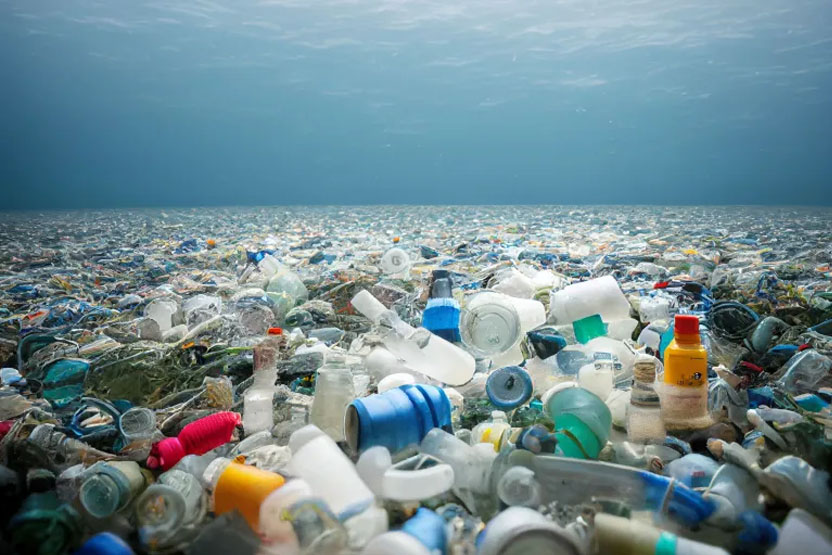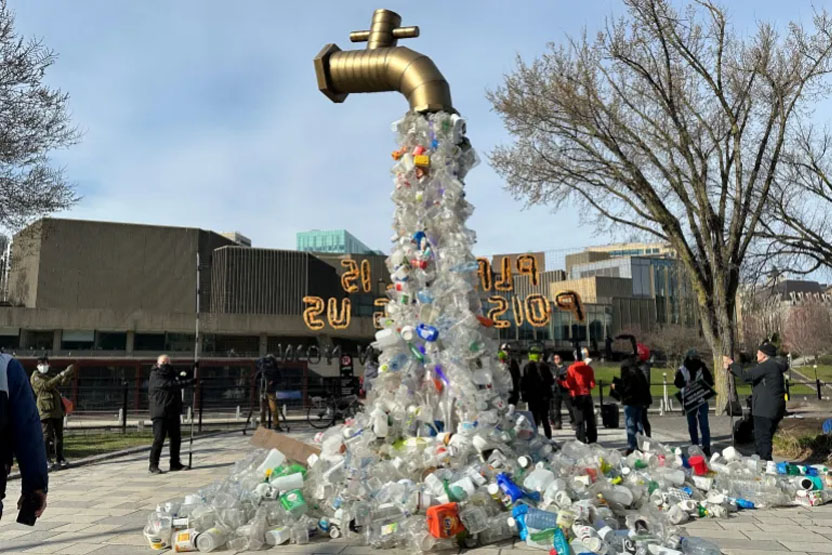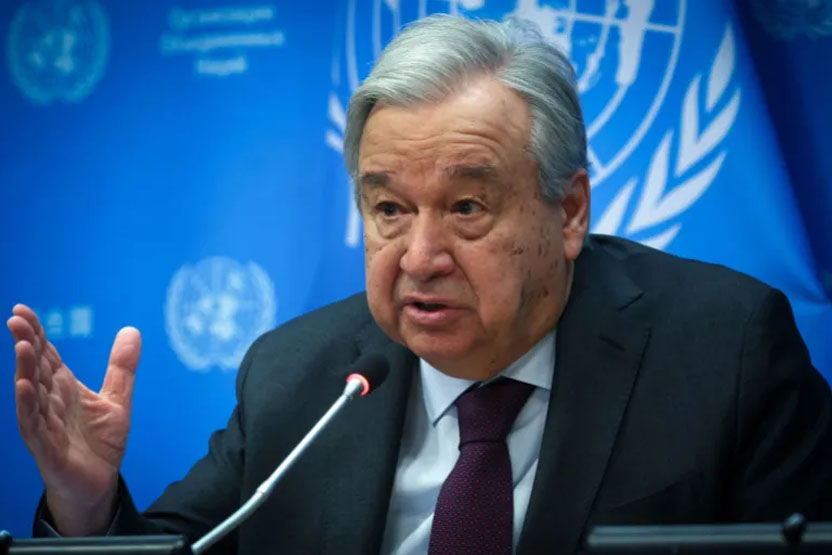
World Environment Day 2025, which falls on June 5, focuses on ending plastic pollution globally, as plastic pollution is one of the most pressing environmental issues in our lives. With the continued increase in the production of single-use plastic, its management and the elimination of its effects are becoming increasingly difficult.
Every year, millions of tons of plastic waste enter the environment, and its effects spread across oceans, waterways, and land. The world’s rivers, oceans, and seas have become transportation routes and dumping grounds for plastic resulting from human activities.
A global treaty on plastic could have provided a coordinated international framework to address the production, use, and disposal of plastic in a way that promotes sustainable practices and reduces waste at its source. However, the approval of this treaty appears to be on a faltering path.
Environmental advocates believe that by uniting government efforts, this treaty could stimulate innovation in alternative materials, enhance recycling efforts, and establish strict legal obligations to reduce plastic pollution.
Environmental activists near a water faucet sculpture with flowing plastic bottles, symbolizing the spread and danger of plastic.
The World of Plastic
It is estimated that more than 8 million tons of plastic waste end up in the oceans annually. Since most plastic does not degrade, it accumulates gradually in our oceans, where it may take centuries to break down without ever completely disappearing. This poses serious threats to aquatic life, human health, and the marine ecosystem.
Studies also indicate that by 2050, the volume of plastic in the oceans could exceed the number of fish. The issue of plastic pollution has become so widespread that it prompted the United Nations to launch a campaign for a global treaty on plastic.
The story of plastic began in the early 19th century with the invention of the first synthetic plastic by Englishman Alexander Parkes, who obtained a patent for it in 1862. This marked the beginning of a new era in materials science, as the flexibility and durability of plastic opened the door to countless uses.
The 20th century witnessed a revolution in plastic production, marked by the emergence of fully synthetic plastic in 1907, when Belgian chemist and marketer Leo Baekeland pioneered the production of the first fully synthetic plastic (Bakelite), solidifying plastic’s place in modern manufacturing.
The real turning point came after World War II when plastic production flourished. The war accelerated advances in polymer chemistry, leading to the mass production of plastic materials such as polyethylene and polypropylene.
By the 1960s, plastic began to dominate consumer goods, from packaging to household tools. This rapid adoption by companies and consumers was driven by the low cost and wide usability of this material.
At the time, the environmental consequences of the plastic boom were not yet clear. For decades, this revolutionary material was praised for its ease and usefulness, while the long-term consequences of its production and disposal were largely ignored.
Waste accumulates in seas and oceans, affecting marine life.
From Blessing to Curse
Despite increasing global efforts, only 9% of plastic is recycled. This low rate is attributed to the complexities of recycling products made from different types of polymers, in addition to weak waste management infrastructure.
Plastic, which is produced from fossil fuels, contributes 3.4% of global greenhouse gas emissions—an amount equivalent to the emissions of the entire aviation sector. Humans now produce about 400 million tons of plastic waste annually, 60% of which ends up in our natural environment.
According to estimates, there are approximately 82 to 358 trillion plastic particles floating in the world’s oceans, with an average estimate of 171 trillion plastic particles recorded in 2019, weighing about 2.3 million tons.
The consequences of plastic pollution go beyond marine environments; they threaten ecosystems, wildlife, and human health. Microplastic particles, resulting from the breakdown of larger plastics, have been found in drinking water, seafood, and even in the air we breathe.
While these particles are still under study, some research suggests they may cause various health problems, such as endocrine disorders and possibly cancer, as nanoplastic particles have reached vital organs in both humans and animals.
According to the United Nations, more than 51 trillion microplastic particles have been scattered across the world's seas, and it is expected that 99% of marine organisms will ingest these microplastics by 2050 if no actions are taken to slow plastic pollution.
UN Secretary-General António Guterres has called for a rapid end to plastic addiction.
The Complicated Treaty
The United Nations took the initiative to draft a global treaty on plastic. This treaty aims to establish legally binding obligations among states to reduce plastic production, enhance recycling efforts, and encourage sustainable alternatives.
In June 2023, UN Secretary-General António Guterres called on "governments, companies, and consumers to stand united so that we may rid ourselves of our plastic addiction and achieve the goal of zero waste."
In early 2022, the United Nations Environment Assembly adopted Resolution 5/14, which approved the adoption of a legally binding global treaty on plastic by the end of 2024.
Since then, four sessions of the Intergovernmental Negotiating Committee have been held, with the latest—the fourth session—ending on April 29, 2024. While some progress was made in identifying critical products and chemicals of concern, the talks did not sufficiently address the need to reduce primary plastic production.
At least two camps are facing off in the fifth round of talks aimed at reaching an international treaty to reduce pollution caused by plastic, which began in November 2024 under the supervision of the United Nations Environment Programme.
The first camp includes many African, European, and Asian countries within the "High Ambition Coalition," which wants a treaty covering the full “life cycle” of plastic materials—from production to waste.
The second camp includes other countries, particularly oil-producing ones, and prefers that the treaty only address waste management. This camp believes that reducing production is not among the objectives of the negotiations.
The influence of lobbying groups in the industrial sector poses a major obstacle in the negotiations. There are still doubts about the feasibility of reaching a signable treaty by the end of 2025 due to the complexity of the negotiations, with another round expected in August.
Another major aspect that seems to be absent from the discussions of the global plastics treaty is the accountability of polluting companies for the waste they generate. Studies on branded plastic pollution have shown that around 60 companies are responsible for more than half of the world's plastic pollution.
For the sixth consecutive year (2024), Coca-Cola was recognized as the biggest polluter in the Global Brand Audit initiative, setting a new record with a total of 33,820 pieces of plastic waste.
In addition to requiring companies to reduce plastic production, environmental advocates are also calling for ensuring that polluting companies are held responsible for funding the cleanup of the waste they caused.
In light of these challenges, the need for a global treaty on plastic has become more urgent than ever. Future generations will inherit the responsibility of confronting the worsening plastic pollution in the pursuit of a healthier planet free from the burden of plastic pollution.





Comment
Reply